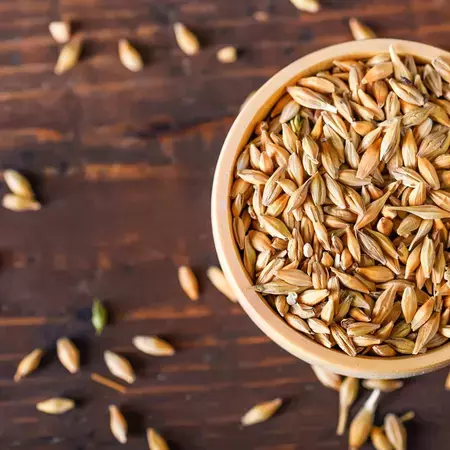1. Wheat started being cultivated 10,000 years ago
Wheat is one of the oldest crops in the world. It started being cultivated in the Euphrates Valley in the Middle East almost 10,000 years ago. To give you an idea of how long ago that was, Britain was still part of mainland Europe at the time and would not split off for another 2,000 years. Wheat cultivation is even older than the first cities in the world, the Great Pyramid of Giza and the first solar calendar ever created. It has been with us for a very long time.
2. Pharaohs in ancient Egypt were buried with wheat
One of the most interesting facts about wheat is that its seeds have been found in the Egyptian tombs of pharaohs. This was first discovered in the 1840s and soon ‘mummy wheat’ became a world sensation when it was claimed that wheat plants could still grow from those millennia-old seeds. The myth was eventually debunked, but it wasn’t until the middle of the 20th century when it became obvious that growing wheat from ancient seeds was not possible1.
3. Wheat is the most widely grown commercial crop in the world
Considering wheat was part of the dinner for most civilisations in Europe, Middle East and North Africa, it’s no surprise that these days it’s still one of the most popular crops in the world2. In fact, one of the most amazing facts about wheat is that you can find this grain growing on every continent except for Antarctica. Compared to other crops, wheat has a few advantages working in its favour. It grows relatively easy in temperate climates, it’s easy to store once cultivated and can become part of an astonishing number of foods thanks to its ability to be converted into flour.
4. Wheat occupies a central place in human nutrition, providing 20% of the daily protein and food calories3
Wheat contains B vitamins, dietary fibre and protein, making this popular cereal an important part of a well-balanced nutrition. Whole grains contain the most nutrients which is why they are recommended for healthy diets. Whole grain are grains of cereal that have been kept intact. Keeping the entire seed of the plant as it was when it was growing in the fields means more nutritious content ends up on our plates.
5. It usually takes about 120 days between sowing and harvesting wheat
If you want to try to grow wheat, you will need to wait a few months before you get to collect your golden harvest. 120 days is the average time that has to pass between sowing the seeds and harvesting wheat, but keep in mind that different seeds and different climates might mean a different timetable for growing and harvesting this grain.
Now that you know these fun facts about wheat, why not start a new gardening project and plant wheat yourself? If you’re keen to give it a go, we’ve got the article for you. Discover the different types of seeds that you can choose, as well as step-by-step instructions on how to grow wheat. Don’t forget to get the little ones involved too!
Footnotes:
1. https://olh.openlibhums.org/article/id/4430/
2. Agronomy | Free Full-Text | Worldwide Research Trends on Wheat and Barley: A Bibliometric Comparative Analysis | HTML (mdpi.com)
3. The contribution of wheat to human diet and health (nih.gov)























